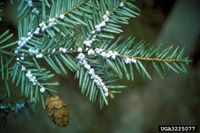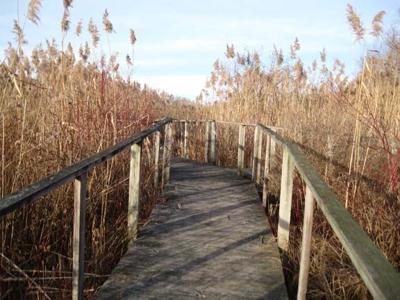As a professional arborist, Joe Oszust, 44, spends a lot more time than most thinking about hemlock woolly adelgid, emerald ash borer and other invasive species.
Not only can such invasive plants and pests damage a local economy or environment, “invasive species can destroy the places we love and require costly solutions,” according to the state Department of Environmental Conservation.
By some estimates, invasive species in the country can cause more than $120 billion in damages annually.
So, perhaps we should all be paying closer attention.
I spoke with Oszust, who works for Davey Tree Services in the Capital Region, for Invasive Species Awareness Week, which ends Sunday.
Here’s a portion of our conversation, edited lightly for clarity.
Waite: Why should we be concerned about invasive species?
Oszust: It's very difficult to talk about invasives unless you talk about native species that are displaced by plants that are non-native. Some examples we've all seen on the side of the road and probably mistaken them for cattails, but they're actually an invasive species called phragmites. It’s an aquatic plant, and it sort of looks pretty, so we don't really think about it, but it's taking over native habitat where cattails or maybe winterberry or other aquatic plants could be growing.
Waite: Why is that such a big problem?
Oszust: Eventually it will lead to the eradication of native plants.
Waite: As gardening season blooms, what should people be on the lookout for in their own yards?
Oszust: Even if they don't know what the plant is, they may have a pretty good idea that it's problematic if they're seeing a lot of it somewhere and they know they didn’t plant it. You sort of always have to be somewhat worried when you start seeing something reproduce that rapidly.

Waite: If people see an unknown plant growing on their property, what should they do?
Oszust: So one thing is to identify the plant and try to remove the plant, but it can't stop there. In order for effective mitigation of an invasive species, it needs to somehow be replaced. One of the things that we like to do if we're doing invasive management, say, in a forested area, we'll clear a section and then we'll fence in native plants to get them established and then move onto another area of the forest.
Waite: So you sort of have to crowd out the invasive species?
Oszust: Exactly. And if you think that you're only going to cut it down, then sometimes a better thing is just to leave it.
Waite: Why’s that?
Oszust: Because it's a placeholder, at least. You’ll know you have that invasive species there, but nothing else is going to take over it right now until you’re committed to replacing it with something native.
Waite: What can you tell me about invasive pests?
Oszust: These are insects that are usually introduced from a different region or different country. We're dealing a lot right now with the emerald ash borer, which is an insect that has really devastated the ash population in New York.
Waite: What are you on the lookout for?
Oszust: With the emerald ash borer, we don't usually see the insects so much. We usually see the damage that's caused by woodpeckers that are going after the insect. It causes a symptom called blonding, which is where the woodpeckers are pulling the bark off, and it creates a blond color.
Waite: Is there an example of a native species that has been hit particularly hard by an invasive species?
Oszust: In recent years, New York elms were devastated by Dutch elm disease spread by an invasive insect, the European elm bark beetle. The disease kills the tree, right out. Elms lost to Dutch elm disease are being replaced with disease-resistant elms. But we're talking about native plants and we’re talking about huge numbers of plants.
Waite: In which case, you're really talking about a changed landscape?
Oszust: Totally. And they really fuel each other. Another good example with ash trees going away is that leaves a hole in the forest, and there's another invasive species called Japanese stiltgrass, which does not come up in the forest if there's a canopy. But once there's sunlight introduced, that stuff comes up right away, and it's super invasive.












